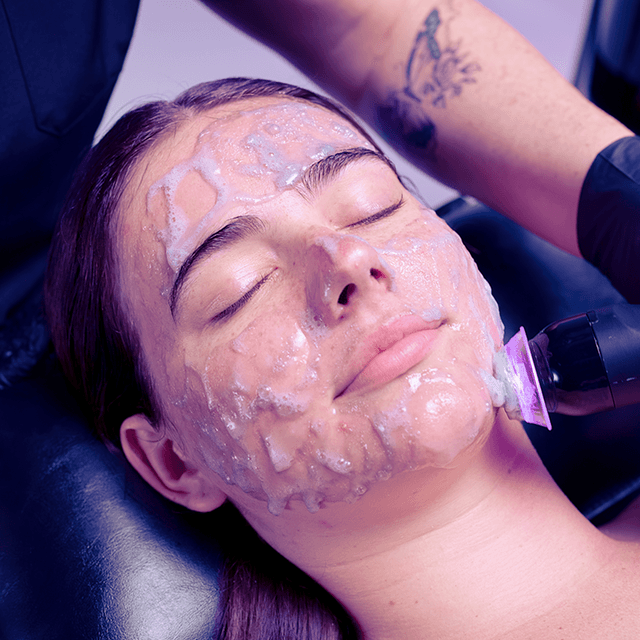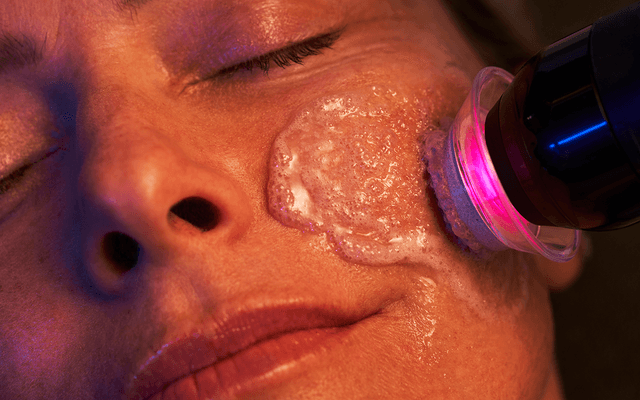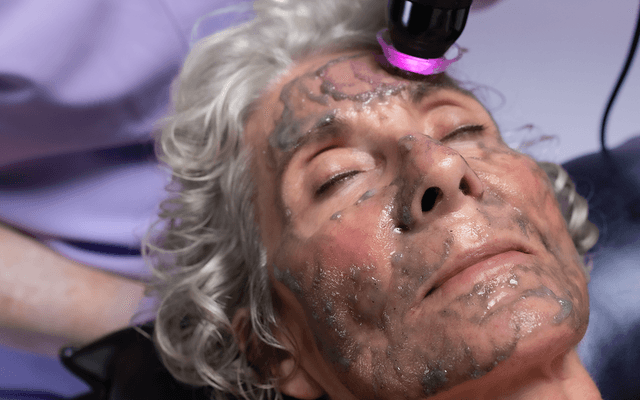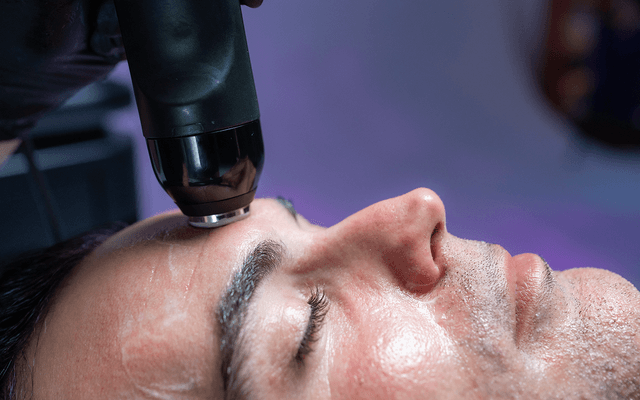The medical spa industry is booming, with the average med spa generating around $1.4 million in annual revenue according to AmSpa. Profit margins typically range from 30% to 40%, and some high-performing spas achieve even higher returns (AmSpa). But are you truly optimizing your service menu for maximum profitability, or are you relying on outdated assumptions? Many spa owners continue operating with business models that worked five years ago but may no longer be optimal in today's competitive marketplace.
Too often, med spa owners chase trends without running the numbers. Or they invest in impressive equipment that doesn't deliver in terms of revenue per hour. This guide challenges your assumptions, sharpens your decision-making, and helps you confidently select treatments that truly move the needle. In an industry where technology and consumer preferences evolve rapidly, making data-driven decisions about your service offerings can mean the difference between struggling to break even and building a thriving, sustainable business.
Are Your Services Profitable - or Just Popular?
Before you introduce your next facial, filler, or device, ask yourself: Are you offering treatments because they're trending or because they're profitable? The most sought-after services don't always sustain your business long-term. Many spa owners fall into the trap of adding services simply because competitors offer them or because they're generating buzz on social media. This reactive approach to building a treatment menu often leads to inconsistent revenue streams and scattered brand identity.
Consider this: A treatment that books solid for two months following a celebrity endorsement might seem like a winner, but what happens when the next trend arrives? Without sustainable demand and healthy margins, trendy treatments can become expensive distractions that consume resources without delivering adequate returns. The key is to distinguish between short-term popularity and long-term profitability.
Instead of chasing every new trend, develop a methodical approach to evaluating potential additions to your service menu. This means looking beyond initial excitement and conducting a thorough analysis of each treatment's potential contribution to your bottom line. (Psst: Right now, the data shows us that treatments focused on skin regeneration have staying power.)
Key Factors That Impact Treatment Profitability
To identify which treatments actually contribute to your bottom line, consider the following:
Treatment Demand: Is there consistent client interest in this type of service within your local market? Don't just rely on national trends—understand your specific demographic and their preferences. Survey your existing clients about their interests, and research local competitors to identify gaps in the market that you could fill profitably.
Profit Margins: What is the markup between what you charge and what it costs you to deliver the treatment? This includes not just product costs but also practitioner time, utilities, and other overhead expenses. A treatment with a 90% profit margin might be more valuable than one with a 70% margin, even if the latter has higher ticket prices.
Initial Investment: What is the upfront equipment or product cost, and how long will it take to recoup? Some devices require investments of $50,000 or more, necessitating careful calculation of the break-even point. Consider whether leasing options might make more financial sense than purchasing outright, especially for technologies that may become outdated within a few years.
Treatment Duration: Are you maximizing billable hours by offering services that balance time and revenue? A 30-minute treatment that generates $150 may be more profitable than a 90-minute service that brings in $300, as you can perform three of the shorter treatments in the same time frame, generating $450 instead.
Staffing and Training Needs: Will you need to invest in specialized staff or certifications? Some treatments require extensive training or even hiring specialists with specific credentials, dramatically affecting your cost structure. Factor in not just the initial training but ongoing education to maintain proficiency and certification.
Client Retention: Does this service encourage repeat visits, memberships, or package deals? Treatments that create a need for maintenance or follow-up sessions can build predictable revenue streams and strengthen client relationships over time. The lifetime value of a client should be a key consideration when evaluating any service.
Market Differentiation: Will this treatment help your spa stand out from competitors, or are you simply matching what everyone else offers? Sometimes a unique offering, even with slightly lower margins, can attract new clients who then utilize your other, more profitable services.
Ask Yourself: If you removed your most 'popular' service tomorrow, would your revenue drop—or would it actually free up time for higher-value treatments? Many spa owners are surprised to discover that their signature service isn't actually their most profitable one when all factors are considered.
High-Profit Treatments to Consider
Here are some of the services consistently ranked among the most profitable in the med spa space:
Injectables (Neuromodulators, Fillers): High demand, minimal overhead, fast appointments. These treatments typically take 15-30 minutes to administer but command premium prices, resulting in excellent revenue per hour. The consumable costs are predictable, making financial planning straightforward. Additionally, these treatments require maintenance visits, creating a reliable client base that returns every 3-4 months.
Laser Hair Removal: Large initial investment, but a strong long-term ROI. Once you've paid off the equipment, the profit margins become exceptionally attractive. Clients typically purchase packages of 6-8 sessions, securing revenue upfront and ensuring continued bookings. The predictable treatment protocols also make this service easy to delegate to properly trained staff.
Microneedling: Minimal consumables and great for packages. This treatment addresses multiple skin concerns, from acne scars to fine lines, making it appealing to a broad client base. The equipment cost is relatively low compared to lasers, and the disposable components represent a small percentage of the treatment price. When combined with serums or PRP, the perceived value and price point can increase significantly.
Advanced Facials: Customizable treatments like Glo₂Facial allow for high margins and repeat business. These multi-step treatments create tangible results while using relatively inexpensive products. The personalization aspect justifies premium pricing, and clients appreciate the tailored approach, leading to higher satisfaction and retention rates.
Ask Yourself: Which of these treatments align with your target demographic, existing equipment, staff capabilities, and brand positioning? The most profitable treatment for your specific spa depends on these factors rather than industry averages alone.
How Much Are You Really Making Per Hour?
According to AmSpa, the average patient spends $504 per visit as of 2024. But how much of that actually lands in your pocket? Many spa owners focus on total revenue without considering the time investment required to generate that income. This oversight can lead to a calendar full of appointments but disappointing profits.
How to Calculate Revenue Per Hour
Total Revenue for Period ÷ Total Treatment Hours Worked = Revenue Per Hour
Let's say you earned $10,000 last week and spent 25 hours performing treatments:
$10,000 ÷ 25 = $400/hour
Is that enough to cover your rent, staff, inventory, and marketing—and still pay yourself well? For many spas in prime locations with significant overhead, $400 per hour might barely cover expenses. This simple calculation reveals why some busy spas still struggle financially—they're not generating sufficient revenue for each hour of service provided.
To take this analysis deeper, calculate the revenue per hour for each specific treatment or service provider. This granular approach often reveals surprising insights about which services and which team members are truly driving profitability.
Industry Benchmark:
According to The Aesthetic Guide, top-performing med spas aim for $600–$1,000 per hour. This target accounts for all the costs associated with running a professional medical aesthetic practice while still allowing for healthy profit margins. Keep in mind this can include retail you sell, series, and add ons. Reaching this benchmark requires strategic pricing, efficient scheduling, and a focus on high-value services.
Ask Yourself:
Which services on your menu consistently hit (or miss) that benchmark? Are there low-performing treatments you've kept simply out of habit or because you enjoy providing them? Remember that every hour spent on a low-value service is an hour not spent on something more profitable.
Are you working more hours or earning more revenue per hour? Growth should come from increased efficiency and value, not just from extending your working day. Many spa owners burn out trying to compensate for low-value services by simply working longer hours.
How does your revenue per hour compare to industry benchmarks, and what specific changes would help you close any gaps? Sometimes a simple price adjustment or bundling strategy can dramatically improve this metric without requiring new equipment or skills.
The ROI Equation: Don't Skip the Math
Every service you offer should be evaluated using this simple but powerful formula:
Profit Margin = (Revenue per Treatment – Costs per Treatment) ÷ Revenue per Treatment × 100
For example:
Revenue: $225 facial Costs: $35 (including consumables, labor, wear and tear on the device) ($225 – $35) ÷ $225 = 84% margin
That's the power of high-efficiency treatments. At this margin, even a moderately booked schedule can generate significant profits. Compare this to treatments with high product costs or extensive time requirements, where margins might drop to 50% or lower.
When calculating costs, be thorough and honest. Include:
Direct product costs
Pro-rated labor (including benefits)
Equipment depreciation
Utilities used during the treatment
Laundry and disposables
A portion of your rent and overhead
Many spa owners underestimate true costs by overlooking these indirect expenses, leading to inflated profit projections and disappointing actual results.
Ask Yourself:
How many $99 services are you relying on to hit your monthly goals, and how sustainable is that? Low-priced treatments can attract new clients, but they must either have exceptional margins or serve as effective gateways to higher-value services. Otherwise, they simply fill your calendar without filling your bank account.
What would happen if you eliminated your two lowest-margin services and redirected that time toward your two highest-margin offerings? This mental exercise often reveals opportunities for significant profit improvement without increasing working hours.
Are you regularly reviewing and adjusting your pricing based on updated cost calculations? Many spa owners set prices once and then fail to account for rising costs of goods, labor, and overhead, gradually eroding their margins without realizing it.
What Market Trends Should You Pay Attention To?
Clients are savvier and more results-driven than ever. They're prioritizing:
Skin regeneration health over quick fixes: Today's clients understand that lasting results come from treatments that improve skin health at a cellular level, not just temporary cosmetic enhancements. This shift has increased demand for treatments that stimulate collagen production, improve cellular turnover, and enhance the skin's natural functioning. Services that can demonstrate measurable improvements in skin quality over time are gaining traction over those promising immediate but short-lived results.
Noninvasive treatments with zero downtime: As busy professionals dominate the med spa demographic, the appeal of treatments that allow immediate return to normal activities has skyrocketed. Clients want results without recovery periods, creating opportunities for technologies that deliver visible improvements without redness, peeling, or bruising. This trend has fueled the growth of treatments using radio frequency, ultrasound, and specialized light therapies that work beneath the skin's surface without disrupting its appearance.
Personalized experiences: The one-size-fits-all approach to aesthetics is rapidly becoming obsolete. Clients expect treatments tailored to their specific skin concerns, genetic background, lifestyle factors, and aesthetic goals. This personalization extends beyond just the technical aspects of treatment to include customized home care recommendations, follow-up protocols, and long-term treatment planning. Spas that invest in comprehensive client assessments and personalized treatment journeys are seeing higher satisfaction rates and improved retention.
Holistic approaches: Increasingly, clients understand the connection between internal health and external appearance. This has created growing demand for treatments that address multiple factors affecting skin and body appearance. Services that combine technology with nutraceuticals, stress reduction, or nutritional guidance are gaining popularity. This holistic trend represents an opportunity to increase average ticket size by addressing both immediate concerns and underlying factors.
Technological integration: Clients expect their aesthetic providers to leverage technology not just in treatments but throughout the customer experience. From AI-powered skin analysis to digital treatment tracking and virtual consultations, technological integration has become a differentiator for forward-thinking med spas. Investments in these technologies can improve both operational efficiency and client satisfaction.
That means customizable, tech-backed, and instantly gratifying services are more likely to drive bookings and repeat business. The modern aesthetic client wants to see immediate improvements while knowing they're investing in long-term results. They're also increasingly knowledgeable about ingredients, technologies, and expected outcomes, requiring providers to offer sophisticated, evidence-based treatments.
Are your offerings keeping up with client expectations—or are you losing them to a spa down the street? This question should prompt regular evaluation of your service menu against both local competition and broader industry trends.
Questions to Ask Yourself Before Adding a New Treatment
What is the minimum number of treatments I need to sell monthly to break even? Calculate this figure precisely, accounting for all costs associated with the new service. This break-even analysis provides a clear benchmark for evaluating performance and should include both direct costs and allocated overhead.
Can this treatment be easily bundled or added on? Services that complement your existing offerings can create natural upselling opportunities without requiring additional marketing efforts. The best additions to your menu often enhance results from treatments clients are already receiving.
Do I have room in my space—and my schedule—for this equipment? Physical space limitations are often overlooked when evaluating new equipment purchases. Consider not just where the device will sit but also any special requirements for power, water, ventilation, or privacy.
What training or certification is required? Factor in not just the initial training but ongoing education and practice needed to maintain proficiency. Some treatments require significant skill development before providers can achieve optimal results, impacting both the timeline to profitability and staffing considerations.
Will it appeal to my core client base, or do I need to attract a new audience? Adding services that align with your existing clientele's interests allows you to leverage established relationships. Conversely, treatments targeting an entirely new demographic may require significant marketing investment to build awareness and demand.
How does this treatment fit with my spa's brand positioning and treatment philosophy? Consistency in your approach to aesthetics builds client trust and strengthens your market position. Adding treatments that contradict your established philosophy may confuse clients and dilute your brand identity.
Questions to Ask a Sales Rep Before Purchasing
What's the average profit margin for this treatment? Ask for detailed breakdowns of all consumable costs and realistic treatment times rather than accepting vague assurances about profitability. Request contact information for existing users who can share their real-world financial experience with the equipment.
What are typical client outcomes and satisfaction rates? Look beyond before-and-after photos to understand average results across different client types. Ask about satisfaction surveys, rebooking rates, and whether clients typically purchase packages or single treatments.
How long until I can realistically pay off this device? Push past optimistic projections to understand typical utilization rates in practices similar to yours. Request case studies from spas with comparable size, location, and client demographics to get realistic payback timelines.
Are marketing materials and staff training included? Comprehensive support should include initial and follow-up training, customizable marketing assets, and assistance with treatment protocols. Understand exactly what's included in the purchase price versus what requires additional investment.
What kind of post-sale support do you offer? Technical issues can significantly impact revenue if they result in canceled appointments. Ask about response times for service calls, availability of loaner equipment during repairs, and the typical lifespan of the device before major components need replacement.
Can you provide references from spas similar to mine? Other users can provide insights about reliability, ongoing costs, and sustained client interest.
Profit-Boosting Strategies Beyond the Treatment Itself
Adding a profitable service is just the beginning. Here's how to enhance revenue:
Upsell and Bundle: Combine services (e.g., facial + LED therapy) to increase ticket size. Create logical treatment pairings that enhance results and offer slight discounts when purchased together. Train your team to confidently recommend appropriate additions based on client concerns rather than generic upsells. When properly positioned as enhancing outcomes rather than simply increasing cost, bundled services can significantly boost average transaction value while improving client satisfaction.
Create Packages: Offer simple series and packages that encourage consistent visits. Package pricing should provide enough discount to incentivize commitment without unnecessarily sacrificing margin. Consider offering packages at three different price points to accommodate varying budgets while encouraging clients to choose the middle option. Include bonuses like complimentary maintenance treatments or take-home products to increase perceived value without dramatically affecting your costs.
Sell Retail: Complement treatments with retail skincare products to boost margins. Professional products typically offer margins of 50% or higher while extending treatment results between visits. Develop a systematic approach to retail recommendations, connecting home care directly to treatment outcomes rather than treating it as an afterthought. Set specific retail goals for each provider and track attach rates to identify coaching opportunities.
Market Smarter: Promote high-ROI services using SEO-driven content and social proof. Focus your marketing budget on services with the best combination of margin and capacity utilization rather than spreading resources evenly across all offerings. Develop testimonial campaigns highlighting results from your most profitable treatments, and create educational content explaining the science behind these services to build credibility and demand.
Optimize Scheduling: Structure your appointment calendar to maximize revenue-generating hours. Block times specifically for high-profit treatments during your busiest periods, and consider offering incentives for clients who book lower-demand time slots for less profitable services. Some spas successfully implement dynamic pricing, charging premium rates during high-demand times while offering slight discounts during traditionally slower periods.
Develop Provider Specialization: Allow staff to focus on treatments where they excel rather than requiring everyone to perform everything. Specialized providers typically achieve better results, work more efficiently, and generate higher client satisfaction, all contributing to improved profitability. This approach also creates natural career progression paths for your team, reducing costly turnover.
Ask Yourself: Are you doing enough to promote your most profitable services—or are they hiding in a crowded menu? Many spas bury their highest-margin offerings among dozens of other options, making it difficult for clients to identify signature treatments. Consider restructuring your menu to highlight priority services through placement, description length, or visual emphasis.
Why Glo₂Facial by Geneo Fits into a Profitable Menu
The Glo₂Facial is a 4-in-1 treatment that firms, oxygenates, exfoliates, and infuses targeted serums into the skin—all in 30, 45, or 60+ minutes. This versatility allows providers to customize both the treatment approach and the duration to meet specific client needs and scheduling constraints.
High-Profit Margins: 80% to 95% on average. The consumable costs remain consistent and predictable, allowing for accurate financial forecasting. The treatment uses proprietary capsules and serums designed specifically for the platform, eliminating the need to source products from multiple vendors.
Quick Payoff: Many clients pay off the investment in under 30 days. The relatively modest initial investment compared to many aesthetic devices means that even spas with limited capital can add this treatment without taking on significant financial risk. The rapid return on investment improves cash flow and creates opportunities for additional strategic investments.
Client Favorite: Visible results with no downtime. Clients appreciate the immediate glow and improved skin texture achieved without redness or peeling, making this an ideal treatment before special events or as regular maintenance. The comfortable treatment experience encourages word-of-mouth referrals and high satisfaction ratings.
Controlled Customizations: Seven treatment options tailored to different skin types and concerns at a controlled cost of goods. This versatility allows you to address multiple client needs with a single device, maximizing the equipment's utility and appeal across your client base. And by always knowing the cost of your goods, you can always calculate profitability.
Technician Friendly: The standardized protocols are easy to learn and replicate consistently. New staff members can be trained quickly, and results remain consistent across providers. This accessibility reduces training costs and ensures quality control even as your team evolves.
Training, Business & Marketing Support: Geneo provides comprehensive resources to help you learn and promote the treatment effectively. From social media assets to education materials, these tools reduce your marketing development costs while accelerating client awareness and interest.
"Introducing Glo₂Facial into our business has leveled up our practice. In one year, we saw a 400% growth in revenue, largely due to Glo₂Facial. Every single client rebooks it, and it's an absolute workhorse for our practice." - Elizabeth Lassewell, Founder & Lead Aesthetician, Vela Aesthetics
Profitable Treatment Menus Are Built Through Smart Investments
If your menu isn't working for your bottom line, it's time to rethink your approach. Track your metrics. Ask better questions. Run the numbers, not just the promos. And be brave enough to eliminate treatments that aren't earning their keep.
Many spa owners resist removing services out of fear of disappointing loyal clients or admitting a purchasing mistake. However, continuing to offer underperforming treatments drains resources that could be redirected toward more profitable opportunities. Sometimes the best business decision is to acknowledge that a service isn't meeting financial expectations and gracefully transition away from it.
Implementing a data-driven approach doesn't mean abandoning creativity or passion—it means ensuring that your business can sustain itself while delivering the transformative results your clients seek. By establishing clear profitability thresholds and regularly evaluating each service against these benchmarks, you create a foundation for both artistic satisfaction and financial success.
Remember that your treatment menu is not a static document but a dynamic reflection of your business strategy. Schedule quarterly reviews of service performance, adjusting pricing, protocols, or promotion based on the data. This disciplined approach allows you to respond to changing market conditions while maintaining focus on profitability.
Final Questions:
What's the most profitable hour in your schedule—and how can you repeat it? Identify the specific combination of services, providers, and clients that generates your highest revenue per hour, then work systematically to recreate these conditions more frequently.
If you had to double your revenue without working more hours, what would you change today? This thought experiment forces you to focus on efficiency and value rather than volume, often revealing immediate opportunities for profit improvement.
By building a treatment menu with strategy and intention, you'll create a practice that thrives, not just survives. The most successful owners understand that profitability isn't about luck or following trends—it's about making deliberate choices based on data, client needs, and market opportunities. With the analysis tools and frameworks provided in this guide, you're now equipped to evaluate your offerings critically and build a genuinely profitable treatment menu.
Note: This blog post is intended for informational purposes only and does not constitute financial or business advice. Always conduct thorough research and consult with industry professionals before making investment decisions.






















